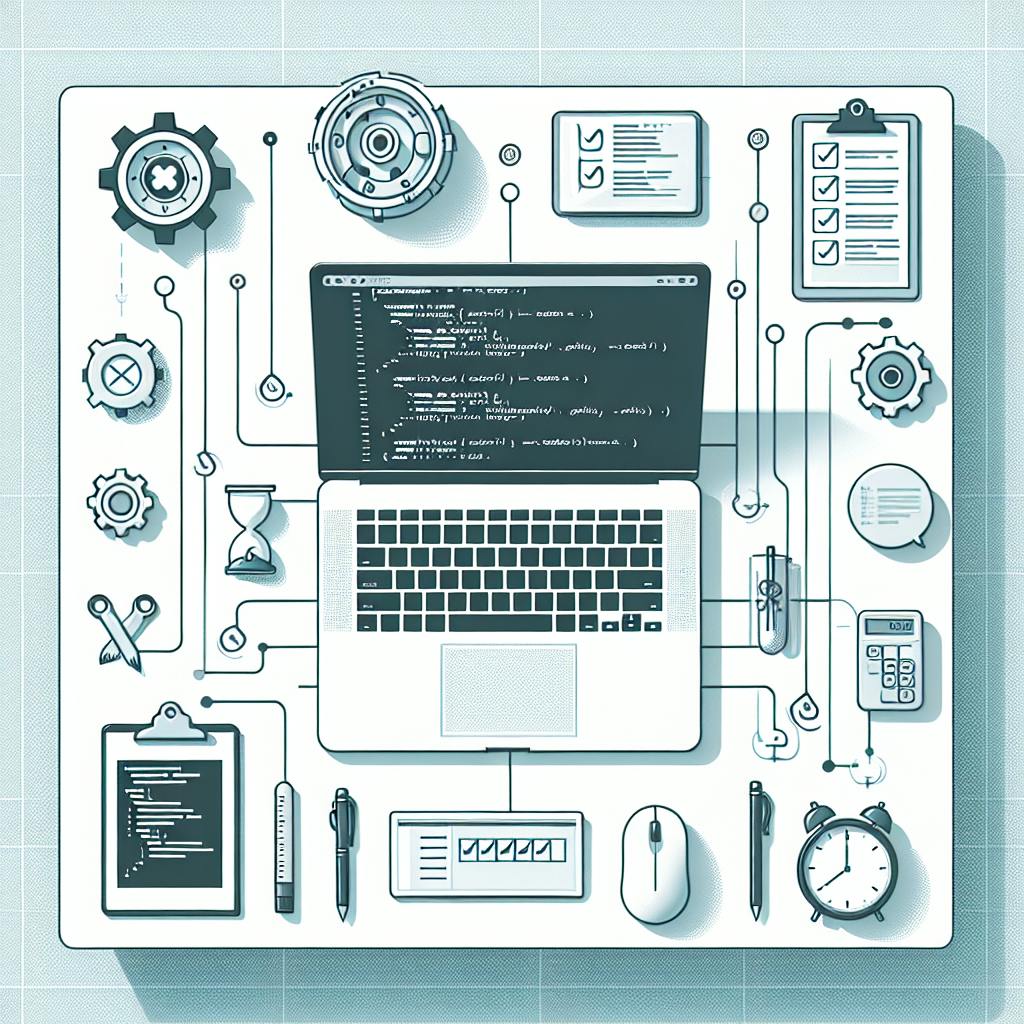Boomi observability helps you see and understand what's happening in your integration processes. Here's what you need to know:
- Observability goes beyond monitoring - it helps you understand why issues occur
- It uses logs, metrics, and traces to give you a full picture of your integrations
- 80% of executives don't fully trust their company's data, showing the need for good observability
Key benefits of Boomi observability:
- Improved data quality
- Faster operations
- Better compliance
- Cost savings from early issue detection
This guide covers:
- What Boomi observability is
- How to set it up
- Tools to use (like Eyer.ai)
- Tips for better observability
- Fixing problems and making improvements
By implementing good observability practices, you can transform how your business handles integrations and make smarter, data-driven decisions.
Related video from YouTube
What is Boomi Observability?

Boomi Observability is like having X-ray vision for your integration processes. It's not just about watching your systems - it's about understanding why things happen and how to make them better.
Key Parts of Observability
Boomi Observability stands on three legs:
1. Logs
These are the play-by-play commentaries of your system. They tell you exactly what happened and when.
2. Metrics
Think of these as your integration's vital signs. They show you how well everything's running.
3. Traces
These are like GPS tracks for your data. They help you spot traffic jams in your system.
Put these three together, and you've got a full health check-up for your integrations.
Observability vs. Monitoring
Monitoring and observability are buddies, but they're not twins. Monitoring is like checking your car's dashboard lights. Observability? That's like having a mechanic who can figure out why the light came on and how to fix it.
Charity Majors, who co-founded honeycomb.io, puts it this way:
"In my view, monitoring is a task whereas observability is a property of a system."
Monitoring looks for known issues. Observability helps you tackle the unknown ones.
Why Observability Matters for Your Business
Observability isn't just tech jargon - it's a business booster:
1. Better Data Quality
With observability, you can trust your data more. That's huge, especially when 80% of execs don't fully trust their company's data.
2. Faster Problem-Solving
When things go wrong, observability helps you find the cause fast. That means less downtime and happier customers.
3. Smarter Decisions
With a clear view of your systems, you can make better choices about upgrades and improvements.
4. Money Saver
Catch problems early, and you'll avoid costly fixes later.
Take Disguise, a visual experiences company. They teamed up with Boomi and boosted their observability. The result? Streamlined operations and a clearer view of their sales pipeline. This led to better revenue forecasts and more time for innovation.
Chris McNabb, Boomi's CEO, sums it up:
"Observability means setting up controls so that if something goes wrong with any aspect of an integrated experience, the source of the problem can be quickly identified and the problem corrected."
In short, Boomi Observability gives you the power to see, understand, and improve your integrations like never before.
Setting Up Observability in Boomi
Setting up observability in Boomi is like giving your integration processes a health check-up. It's about understanding what's happening under the hood. Let's dive into how you can make your Boomi integrations run smoother.
Watching Integration Processes
To keep tabs on your Boomi integration processes, you need the right tools. Here's how to get started:
1. Configure Fluent Bit side-car
Fluent Bit is your go-to data collector. It's light, fast, and perfect for cloud setups. To set it up:
- Set ingestion ports and paths for each pod to send logs.
- Check out the AWS OpenSearch example on GitHub for a real-world implementation.
2. Set up log sinks
Your observability stack needs different sinks for various log types:
- Application logs from each pod
- Access logs to track user actions
3. Implement tracing
Tracing is like giving your data a roadmap. It shows where your data's going and where it might hit a roadblock.
Key Metrics to Track
Tracking the right metrics is key. Here are some must-watch measurements:
- Process execution time
- Error rates
- Data volume
- API call latency
These aren't just numbers. They're your integration's vital signs.
Finding and Reporting Errors
Catching problems early can save you headaches. Here's how to set up a solid error detection and reporting system:
Set up real-time alerts that ping you when something's off. Tools like PagerDuty or OpsGenie work well with Boomi for this.
Classify errors based on how bad they are and how much they affect things. This helps you know what to fix first.
Make dashboards that show errors in real-time. This helps you spot patterns and recurring issues fast.
Looking at Past Data
Past data can help you see what's coming. Here's how to use it:
Keep your logs and metrics for a while. This lets you see trends over time.
Tools like Eyer.ai can help you look at old data to guess what might go wrong next. Their AI can spot weird stuff and give you tips on what to do about time-based performance data.
Look back at what went wrong before and learn from it. Ask: What caused the problem? How can we stop it from happening again?
sbb-itb-9890dba
Tools for Better Observability
You need the right tools to get the most out of your Boomi integrations. Let's check out some top options that'll help you see what's really going on in your systems.
Eyer.ai Platform Integration

Eyer.ai is a game-changer for Boomi observability. It's like having a super-smart assistant watching your integrations non-stop.
What makes Eyer.ai special?
- It uses AI to understand your data, not just collect it
- It spots issues before they become big problems
- It's easy to set up - no tech genius required
Ivar Sagemo, one of Eyer.ai's founders, puts it this way:
"Eyer sits atop your integrations, providing transparency and control across interconnected systems. We actively analyze integration behavior, identifying potential problems before they escalate."
Pro tip: Use Eyer.ai's anomaly alerts. They'll ping you right away if something weird happens in your Boomi integrations. It's like having a watchdog that never sleeps.
Other Monitoring Tools
Eyer.ai is great, but it's not the only player in the game. Here are some other tools that work well with Boomi:
Think of AtomWatch as a fitness tracker for your Boomi processes. It keeps tabs on:
- How your processes are running
- The health of your clusters
- Your overall infrastructure
A Kitepipe rep says:
"With Kitepipe's AtomWatch offering in the Datadog Marketplace, you can enhance your proactive monitoring of the health and performance of your Boomi-managed integrations."
What's cool about AtomWatch? It hangs onto your Boomi logs for ages. This helps you spot long-term trends and fix those annoying, persistent issues.
Quick tip: Check out the AtomWatch Overview dashboard. It's like a health snapshot of all your Boomi processes. You'll see key stuff like errors and how long things take to run, all in one place.
When you're picking a tool, think about what matters most to you. Need deep analytics? Real-time alerts? Long-term data storage? Choose a tool that fits your needs and your wallet.
Tips for Better Observability
Want to supercharge your Boomi integration processes? Let's dive into some killer observability techniques.
How to Collect Good Data
Good data is the backbone of observability. Here's how to nail it:
- Go all-in on logging: Capture everything from your Boomi processes. Timestamps, process IDs, error codes - the works. It'll make your life way easier when things go sideways.
- Keep an eye on the important stuff: Track things like how long processes take, how much data you're pushing, and how snappy your API calls are. It's like taking your system's pulse.
- Follow the breadcrumbs: Use distributed tracing to see how requests move through your system. It's like having a GPS for your data.
- Leverage what you've got: Boomi's AtomSphere platform has some sweet built-in monitoring tools. Use 'em to keep tabs on your atoms, processes, and connections.
Setting Up Smart Alerts
Alerts are great, but too many can drive you nuts. Here's how to strike the right balance:
- Focus on what matters: Set up alerts for stuff that can really mess up your system. If a process fails or data looks wonky, you want to know ASAP.
- Not all alerts are created equal: Use a tiered system. Critical issues? Ping me now. Minor stuff? Save it for the daily roundup.
- Let the machines do the thinking: Use some fancy ML algorithms to figure out what's normal for your system. That way, you only get pinged when something's really off.
- Bundle up: If one thing goes wrong and causes a bunch of failures, don't blow up your inbox. Group those alerts together.
Making Systems Run Better
Now, let's use all that data to kick your system into high gear:
- Find the slow pokes: Use your tracing data to spot processes or API calls that are dragging their feet. If one integration is always lagging, it's time to dig in and optimize.
- Right-size your resources: Keep an eye on your Boomi atoms. If they're constantly maxed out on CPU or memory, it might be time for an upgrade.
- Stay ahead of the game: Use your historical data to see problems coming. If things are slowly getting slower over time, fix it before it becomes a real headache.
- Always be improving: Set a reminder to review your data every few months. Look for trends and use them to make smart decisions about your setup.
Managing Your Data
Managing all this observability data is crucial. Here's how to keep it under control:
- Know when to let go: Keep detailed data for a week or two, then summarize older stuff for long-term storage. You'll have the best of both worlds - recent details and long-term trends.
- Pick the right tools: Consider using databases like InfluxDB or Prometheus for your metrics. They're built to handle tons of time-stamped data without breaking a sweat.
- Keep it clean: Set up some automated processes to archive or delete old data you don't need anymore. It'll keep your system running smooth.
- Lock it down: Encrypt sensitive data and make sure only the right people can access your observability info. You don't want that falling into the wrong hands.
Fixing Problems and Making Improvements
Let's talk about keeping your Boomi integrations running smoothly. We'll cover common issues, how to spot performance problems, and ways to keep your system in top shape.
Common Problems and Solutions
Here are some issues you might run into and how to fix them:
1. Mixing up Process and Document Properties
It's easy to confuse these two. Process properties are global variables, while document properties are metadata for each document. To fix this, double-check your property assignments. Make sure you're using the right type for each task.
2. Performance Bottlenecks
If your integrations are slow, you might be using the Flow control shape to run one document at a time. This can really slow things down when you're dealing with lots of data.
The fix? Stop using the flow control shape for document flow. Instead, check out the document flow modules in the Boomi Associate Developer course. You'll learn better ways to handle your data.
3. Disconnected Integrations
Sometimes your Boomi integration might seem out of touch with your business process. This can lead to missed alerts and unnoticed issues.
To solve this, make your integration more visible. Use status updates or email alerts to keep your team informed about what's happening behind the scenes.
Finding Speed Problems
Slow integrations can be a real headache. Here's how to spot what's slowing you down:
- Look at your process execution times. If one integration is always lagging, it's time to investigate.
- Keep an eye on how long your API calls are taking. Slow responses can hold up your entire process.
- Check if your Boomi atoms are maxed out on CPU or memory. This could be why things are running slow.
John Parker from Cornell University says:
"We develop integrations with Boomi in a quarter of the time it took us before, and those integrations run three or four times faster than they did on our previous platform."
Steps to Fix Issues
When problems come up, here's what to do:
- Use Boomi's monitoring tools to find out where things are going wrong.
- Figure out if it's a data issue, a connection problem, or something else.
- Test your fixes in a safe environment before changing your live system.
- Once you're sure your fix works, roll it out and watch it closely.
- Keep a record of what went wrong and how you fixed it. It'll save you time if it happens again.
Regular System Updates
Keeping your Boomi setup running well is an ongoing job. Here's how to stay on top of it:
- Set aside time each month to check your integration performance.
- Keep your Boomi platform up-to-date. New versions often fix bugs and run better.
- As your business changes, update your integrations too.
- Keep learning. The Boomi world is always changing, so ongoing training is key.
Chris Moon from EPA Victoria says:
"The beauty of cutting-edge iPaaS tools is that they're accessible for non-technical experts."
Conclusion
Observability with Boomi can transform how businesses handle their integration processes. Let's look at what we've learned:
Data quality matters. A lot. Most executives don't fully trust their company's data. That's why good observability practices are key to making smart, data-driven choices.
Boomi's platform gives you real-time data. This means you can make quick decisions based on what's happening right now, not last week.
Tools like Eyer.ai can spot problems before they blow up. It's like having a super-smart assistant watching your data 24/7.
You can't set it and forget it. Regular updates and check-ups keep your system running smoothly.
World Oil Corporation's story shows how this works in real life. They cut out hours of manual data work, making their operations smoother and customers happier.
Chris McNabb, Boomi's CEO, puts it bluntly:
"Without it, problems can compound, leading to lost business and tarnished brands."
Want to get started? Here's what to do:
- Take a good look at your current setup
- Figure out which data pipelines matter most
- Set up systems to keep an eye on things
- Get everyone on board with understanding data



